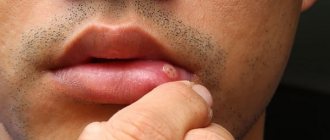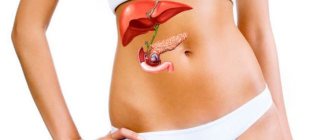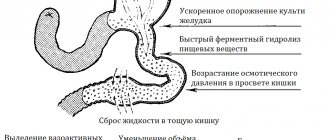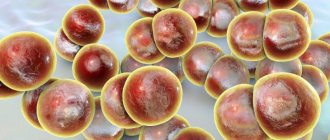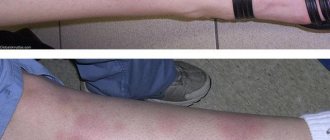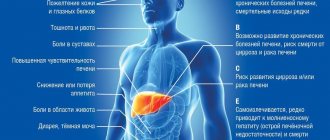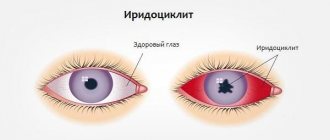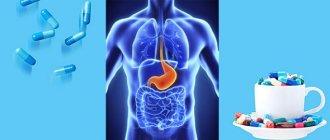It is known that almost all inflammatory diseases are accompanied by fever. Therefore, many patients are interested in the question of whether temperature with cholecystitis is a characteristic symptom or an exception to the rule. According to doctors, the disease is almost always accompanied by fever.
Often, inflammation of the gallbladder occurs due to the penetration of infection through the blood or lymph into the organ. This is possible with appendicitis, enterocolitis, pancreatitis and other inflammatory diseases.
Depending on the characteristics of the course of the disease, catarrhal, phlegmonous, and gangrenous forms of the disease are distinguished. With inflammation of the gallbladder (various forms), temperature and other symptoms may be different. It all depends on the cause of the pathology.
Causes of cholecystitis
Bile, produced by the liver, is involved in the digestive process. It collects in the gallbladder and is periodically expelled to facilitate digestion of food. If there is a lot of food, and it is also fatty, an increased portion of enzymes is needed to break it down, so the gall system should “work” with redoubled force. If such a load occurs rarely, the organ recovers quickly. But constant stress on the bladder can inflame it. Therefore, doctors put malnutrition as the main reason for the development of cholecystitis. The body of the bladder can become inflamed when:
- systematic consumption of high-calorie foods;
- frequent consumption of fortified or alcoholic drinks;
- irregular diet;
- endocrine diseases;
- obesity;
- hormonal imbalance;
- decreased peristalsis caused by impaired innervation of the organ;
- disruption of the blood supply to the bladder;
- helminthiasis;
- obesity;
- constant overeating.
The disease may develop as a result of other pathologies of the gastrointestinal tract (pancreatitis, gastritis, gastric ulcer), since a decrease in the enzymatic capacity of some organs of the gastrointestinal tract causes a load on others, which compensate for the lack of enzymes with their increased work. Physical inactivity and viral diseases are considered provoking factors. All of the above reasons lead to changes in the composition of bile. It becomes thick and does not come out of the bubble well. Stagnation of bile occurs, causing irritation and inflammation of the walls of the organ.
Description of the disease
Symptoms of the disease appear suddenly
Cholecystitis is an inflammation of the gallbladder. It can be acute, when symptoms of the disease appear suddenly, or chronic, when the disease is present and progresses for the rest of the patient's life.
Calculous cholecystitis or cholelithiasis is a disorder of the processes of bile formation, in which water is excessively absorbed and stones are formed. They can cause serious digestive disorders and biliary colic.
Infection provokes purulent cholecystitis, and its most dangerous type is phlegmonous cholecystitis, in which pus accumulates in the gallbladder.
In combination with gallstones, this leads to severe symptoms and a serious condition for the patient. There is a risk of serious complications from both the digestive system and the liver.
Could there be a fever?
Any inflammatory process in the body is accompanied by hyperthermia. This is how the human immune system reacts to an irritant that arises inside. Chills during cholecystitis characterize the degree of complexity of the processes occurring. The essence of the body's protective reaction is to increase the level of leukocytes and the release of pyrogens, which affect the thermoregulation center, as a result of which an increase in the threshold of body temperature is recorded. The more acute the inflammatory process, the more pyrogens are released, the more irritated the thermoregulatory center is and the higher the rates of hyperthermia.
The temperature during XX is subfibrile in nature, since the process proceeds stably, without pronounced symptoms. During the calm period, fever is not observed, and the indicators are equal to the norm. After a feast, a jump in temperature is possible, as the load on the diseased organ increases. High numbers of hyperthermia are possible if the chronic process is complicated by a gangrenous or phlegmonous (suppuration) form. In this case, fever is a symptom of the development of a critical condition. The temperature during AC reaches high limits (up to 39*), accompanied by severe chills and symptoms of general intoxication of the body.
Important! The appearance of pain and fever is a direct reason to consult a doctor.
Forms of the disease and symptoms
Cholecystitis has two types of course - acute and chronic, each of which is characterized by certain symptoms. In the first case, the disease is hidden, and the manifestations are disguised as signs of other gastrointestinal diseases:
- dyspeptic disorders;
- headache;
- malaise;
- decreased appetite;
- fast fatiguability;
- cardiopalmus;
- indigestion;
- irritability.
In addition to general symptoms, there are characteristic manifestations:
- soreness under the right rib;
- belching with bitterness;
- hyperthermia 37-37.5*.
The pain is aching, radiating to the lower back, intensifying after eating “junk food”.
The acute form of the disease is characterized by rapidly increasing symptoms. The pain is sharp, radiating to the back, shoulder blade, epigastrium. The patient suffers from nausea, accompanied by vomiting, which does not cause relief. The acute course of the disease is accompanied by an increase in temperature to 38-39*. A common cause of the disease is an exacerbation that develops on the basis of cholelithiasis. The resulting large stones can clog the bile ducts and cause severe stagnation of bile. Overfilling of the bladder leads to a severe pain attack, as the nerve endings are irritated. The situation is considered critical and requires emergency medical attention.
Symptoms of cholecystitis
During the phlegmonous form of the disease
Phlegmonous cholecystitis (PC) has a more severe course than the previous form of the disease. Patients are interested in whether there can be a temperature during the development of FC. During the illness, the fever becomes more pronounced (up to 38 - 39°), as inflammation intensifies. In addition, the patient experiences pain on the right side under the ribs, weakness, and decreased appetite.
During phlegmonous inflammation, the temperature rises to 39°
The second form of pathology
The catarrhal form of the disease is a type of acute cholecystitis. The pathological process is characterized by:
- pain;
- nausea;
- vomiting;
- symptoms of poisoning.
The pain attack is acute, radiating to the lower back, shoulder and shoulder blade, and the heart area. The pain is constant, intense, and there are signs of indigestion. On examination, the tongue is dry, covered with a white-yellow coating. The patient feels well, since the catarrhal form is the mildest manifestation of acute cholecystitis. There are no obvious symptoms of intoxication, heartbeat is within 70-80 beats per minute. Body temperature ranges from 37.0-37.3*. On palpation, the abdomen is soft, painful in the projection of the gallbladder, the gall sac cannot be felt. The symptoms of Ortner, Murphy, and Kehr are determined. That is, tapping the right rib and pressing in the area of the bladder increases the pain. During palpation, the patient abruptly interrupts his breath due to acute pain.
In the blood test, an increase in leukocytes and band cells is observed (not a significant shift). An ultrasound examination reveals an increase in the bile duct, a slight thickening of the walls with a decrease in echo density. If stones are present, their shadow is recorded. Catarrhal cholecystitis is treated with conservative methods.
Catarrhal gastrointestinal tract
Therapeutic measures
- Providing a medical and protective regime;
- For dull, aching pain :
- Magnesium sulfate - 2500 mg IV bolus slowly;
For acute pain:
- Drotaverine (No-spa) - 40 mg IM or
- Papaverine 2% - 2 ml IM or
- If there is vomiting :
- Metoclopramide - 10 mg IM (slow IV bolus);
- Medical evacuation (see “General tactical measures”).
The third form of pathology
Long-term catarrhal cholecystitis, especially its calculous form, can cause a phlegmonous type of pathology, which is characterized by the formation of a purulent infiltrate and damage not only to the surface of the bladder walls, but also to deeper layers. The reason for the formation of phlegmon is the obstruction of the ducts or exit from the gall sac by displaced stones, and the addition of an infectious factor to the process. As a result, the patient's condition sharply worsens, the temperature rises from 37.5 to 38.0*, the pulse quickens to 100-120 beats.
Advice! If a patient with cholecystitis still develops a fever during treatment, then you should immediately consult a doctor, since the disease is progressing.
The patient is worried about constant nausea, repeated vomiting, which does not provide relief. The pain is intense, aching, spreading to the entire right side. The tongue is dry, coated with a yellowish coating. On palpation, the abdomen in the area of the gallbladder is tense, slightly swollen, and peritoneal irritation syndrome (Shchetkin-Blumberg) is present. An enlarged bubble or the presence of infiltration is felt under the fingers.
Laboratory tests distinguish:
- in the urine - increased levels of red blood cells, white blood cells, the presence of protein and casts;
- in the blood - high levels of bilirubin.
An ultrasound examination shows a sharply increased size of the organ body, the walls are significantly compacted. The echo density of the bubble is reduced, the “double contour” symptom is present, and the formation of an infiltrate is determined. The x-ray shows right-sided lower lobe pleuropneumonia.
Treatment is surgical. The operation is carried out on an emergency basis. Its essence is to remove the inflamed organ and prevent the development of peritonitis. The main method of performing the procedure is laparoscopic cholecystectomy. The operation is performed under general anesthesia and is one of the least traumatic methods of surgical intervention.
Phlegmonous type of inflammation
Treatment
After examination in the hospital, the patient is prescribed treatment. In the case of acute cholecystitis, it may include the following points:
- A strict diet (up to complete fasting), which lasts 1-2 days. Further, nutrition should be strictly limited and include mainly dairy and plant products, as well as lean meat.
- Systematic intake of antispasmodics and painkillers, which are designed to normalize the condition of the biliary tract and eliminate unpleasant symptoms. In especially severe cases, narcotic drugs may even be prescribed.
- For catarrhal cholecystitis, intramuscular antibiotics are prescribed, which often leads to complete recovery. As for the destructive form of the disease, this technique may be ineffective, since due to degenerative changes, blood circulation in the organ is impaired.
- Surgery may involve removing part of the gallbladder or the entire organ. Unfortunately, in most cases this is a necessary measure, without which it is impossible to save the patient’s life and make a full recovery.
The fourth form of pathology
The most dangerous form of acute cholecystitis is the gangrenous form of the disease. It develops rapidly and is quite difficult to diagnose, since patients are in extremely serious condition and cannot describe their sensations. All layers of the wall of the gall sac are involved in the pathological process, necrotic areas are formed that can rupture at any time. It is the danger of bladder perforation that puts gangrenous cholecystitis among a number of critical conditions.
The patient experiences a sharp increase in symptoms of intoxication:
- lethargy;
- headache;
- vomit;
- nausea;
- tachycardia (110-120 beats per minute);
- confusion.
Pallor and dryness of the skin are visually noted. On palpation, the abdominal wall in the hypochondrium and epigastrium is tense, the abdomen is slightly swollen, so it is impossible to palpate the bubble. Due to gangrene of the gallbladder wall, the nerve receptors die off. Therefore, the pain syndrome in such patients is reduced. There is a dull, constant pain under the right rib. The temperature rises above 39.0*. In elderly and senile people, the classic picture is blurred and is not expressed by clear symptoms, which makes timely diagnosis of the disease even more difficult. Hyperthermia does not reach high numbers. If, against the background of a low temperature, the symptoms of poisoning of the body are sharply expressed, it means that total necrosis of the gallbladder has occurred.
Gangrenous form
Regardless of the extent of the necrotic area, the patient undergoes surgery during which the dead areas are removed. In case of extensive gangrene, the entire bladder is removed. Laparoscopic cholecystectomy is performed using a laparoscope and is considered the least traumatic procedure. Since all the surgeon’s movements are displayed on the monitor using a mini video camera, the doctor controls his actions and removes only damaged tissue without affecting healthy areas.
Surgery for cholecystitis
Therapeutic measures
- Providing a medical and protective regime;
- With severe pain and a typical clinical picture:
- Drotaverine (No-spa) - 40 mg IM (slow IV bolus) or
- Papaverine 2% - 2 ml IM;
- If there is vomiting :
- Metoclopramide -10 mg IM (slow IV bolus);
- With severe hyperthermia or severe jaundice, increasing symptoms of intoxication:
- Catheterization of the cubital or other peripheral veins;
- Sodium chloride 0.9% - IV at a rate of 10 ml/kg/hour, under auscultatory control of the lungs, on site and during medical evacuation;
- Medical evacuation (see “General tactical measures”).
First aid for attacks of cholecystitis
An acute attack of cholecystitis is a condition requiring hospital treatment. Emergency medical and pre-hospital care are distinguished. If an attack occurs, you should try to stop it at home, take measures that can alleviate the patient’s condition and call a medical team.
- Provide rest to the patient.
- Place the patient in the most comfortable position.
- Try to calm down.
- Place a cold compress on the right hypochondrium area. You need to keep the cold for no more than 15 minutes, then take a half-hour break. If the ambulance does not arrive, the procedure can be repeated.
- To suppress nausea, give the patient a drink of mineral water without carbon or mint tea without sugar.
- During vomiting, make sure that the patient does not have a stuck tongue.
First aid for cholecystitis
In addition to mandatory manipulations, there is a list of actions that are prohibited from being performed during an attack.
- Give the patient any food.
- Place heat on your stomach.
- Rinse the stomach or give an enema.
- Give the patient alcohol.
- Give any medications, since their effect reduces the clarity of the clinical picture.
Having completed these manipulations, the patient urgently needs to be sent to a hospital, where he will receive qualified medical care.
Main symptoms
Symptoms will help recognize acute cholecystitis. Emergency assistance may be required when the following external manifestations are present:
- sharp pain in the right hypochondrium (their intensity and frequency are constantly increasing);
- dry mouth and the formation of a white coating on the tongue;
- increase in body temperature up to 38 degrees;
- chills and increased sweating;
- bloating;
- nausea and vomiting;
- a feeling of bitterness in the mouth;
- yellow skin color;
- feeling tired and powerless;
- cardiopalmus;
- difficulties with orientation in space.
It is worth noting that these symptoms can also be characteristic of a number of other acute diseases (pancreatitis, liver abscess, stomach ulcer, etc.), and not just for a problem such as acute cholecystitis. Emergency help is necessary if the pain increases significantly when pressing on the gallbladder area. A similar reaction is observed when tapping the painful area while inhaling.

